The cosmos-obsessed world’s eyes were just fixed on Maryland as NASA, after several teasers, finally released a round of newly public images taken by its James Webb Space Telescope.
The space agency premiered these images during a Tuesday morning telecast from its Goddard Space Flight Center in DMV-area Greenbelt, Maryland. The images are the first full-color ones from the telescope that NASA, publicly shared in conjunction with its partners at the Canadian Space Agency and European Space Agency. The images are especially notable — and described in a NASA statement as representing “the dawn of a new era in astronomy” — because Webb relies on infrared technology that allows it to see things no other telescope can, at a depth previously unknown to astronomers.
“These images, including the deepest view of our universe that has ever been taken, show us how Webb will help to uncover the answers to questions we don’t even yet know to ask; questions that will help us better understand our universe and humanity’s place within it,” NASA Administrator Bill Nelson said in a statement. (The agency frequently abbreviates the name of the telescope to “Webb.”)
The telecast, hosted by Goddard and NASA’s assistant director of science, Dr. Michelle Lynn Thaller, also highlighted the crucial contributions of scientists at the Baltimore-based Space Telescope Science Institute. The institute has offices on Johns Hopkins University’s Homewood campus and in the Hampden neighborhood. It oversees the Webb telescope’s operations and had a key role in producing the images and spectroscopic data that NASA released on Tuesday.
A pre-taped telecast segment showed several of the institute’s researchers discussing how the images came to be over roughly six years of research, as well as how they were coordinated. For instance, Webb project astronomer Dr. Klaus Pontoppidan how a committee was created back in 2016 to develop “a long list of targets for the first images” that Webb took.
“The observatory can’t see the entire sky at any given time, and this is because you want to avoid the mirror seeing direct sunlight, to keep it cold,” he explained. “It actually had to be quite a long list. We ended up with about 70 targets, from which we had to select only a handful. What would create the most beautiful images? What would highlight the different science instruments for Webb?”
“It’s a celebration, as well, of the beginning of science observations,” Pontoppidan added.
Below, see a quintet of the groundbreaking images that Webb, NASA and the Space Telescope Science Institute produced, along with international collaborators:
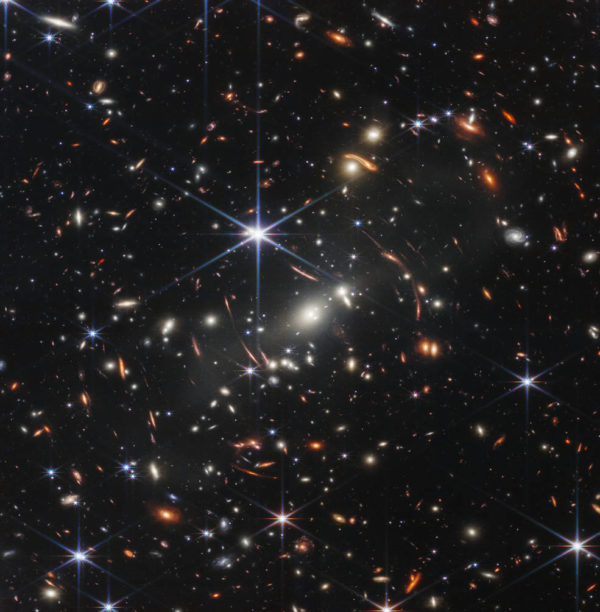
Galaxy cluster SMACS 0723, described by NASA as “Webb’s First Deep Field” because of the detail Webb’s Near-Infrared Camera captured. This shows the galaxy cluster as it appeared 4.6 billion years ago. (Courtesy photo)
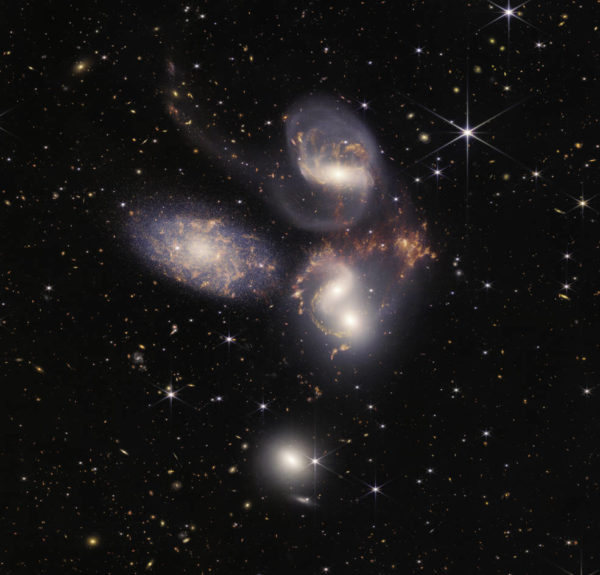
Stephan’s Quintet, a group of galaxies constructed from almost 1,000 separate image files. (Courtesy photo)
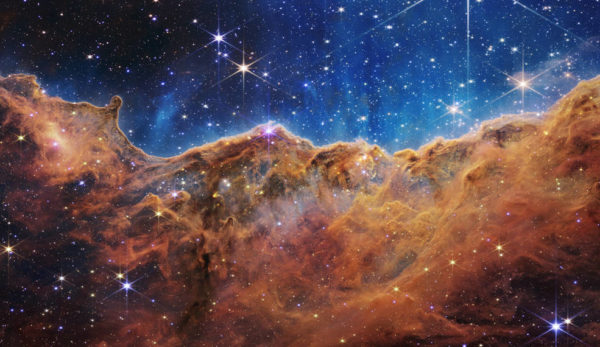
The Cosmic Cliffs at the edge of star-forming region NGC 3324 in the Carina Nebula. This was captured by Webb’s Near-Infrared Camera and shows once-obscured locations where stars are born. (Courtesy photo)
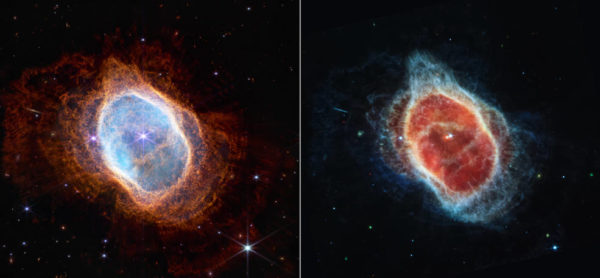
L to R: Near-infrared and mid-infrared light images of the Southern Ring Nebula, in which a dying star has shed outer layers and stopped burning fuel through nuclear fusion. (Courtesy photos, composite by NASA, ESA, CSA and STScI)
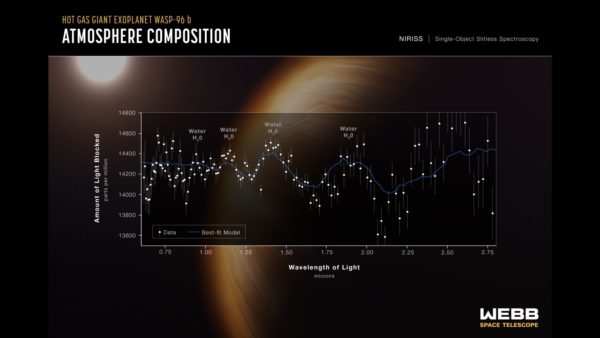
A transmission spectrum from a single observation of the hot gas giant exoplanet WASP-96 b. A spectrograph created this view of starlight filtered through the planet’s atmosphere. (Courtesy image)
Space Telescope Science Institute did not immediately return Technical.ly’s request for comment on Monday.
See more images here, and check out more of the telecast (which is continuing with a press conference through Tuesday afternoon) via NASA’s YouTube below:
Before you go...
Please consider supporting Technical.ly to keep our independent journalism strong. Unlike most business-focused media outlets, we don’t have a paywall. Instead, we count on your personal and organizational support.
Join our growing Slack community
Join 5,000 tech professionals and entrepreneurs in our community Slack today!

This Week in Jobs: Fall from the coconut tree and check out these 22 career opportunities

Gen Z pivots to gig jobs instead of full-time work: Who is that good for?

Baltimore Money Moves: Under Armour to pay out $434M in class-action settlement

